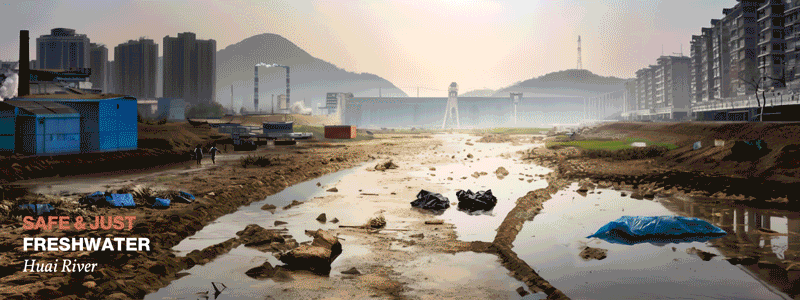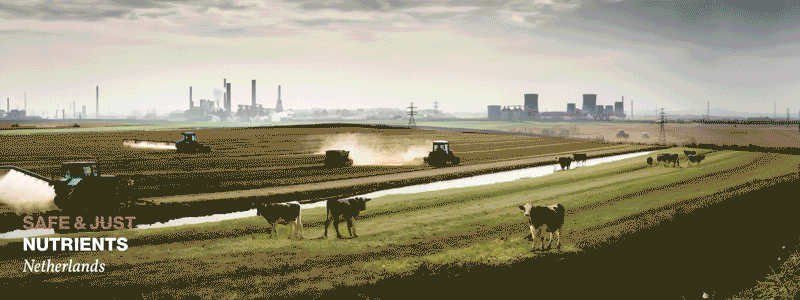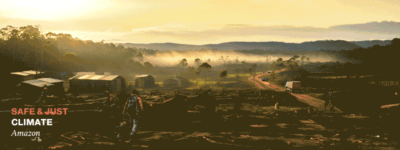Planetary Boundaries and Earth System Boundaries: making sense of the science
20/06/2024
What are Planetary Boundaries and Earth System Boundaries? We break down the differences between these two complementary assessments.
We need a new generation of sustainability targets.
The planetary or global commons are the interconnected systems – like the ocean, freshwater, the climate, nutrient flows, rainforests, and ice sheets – that, when in good condition, keep our planet stable and resilient. They are nature and the planetary systems which are vital for all life.
These commons are all peoples’ shared inheritance and responsibility, and yet, there is currently a very limited system of governance for taking care of them to the extent needed for planetary stability. Lack of clarity around who will take care of what is one of the many reasons the global commons are in crisis.
We’ve tended toward siloed approaches
There are several separate international agreements designed to improve the state of some of the global commons.
These include
- the 2015 Paris Agreement on climate change
- the 2022 Kunming-Montreal Global Biodiversity Framework for biodiversity
- the 2023 Biodiversity Beyond National Jurisdiction Treaty of the High Seas
Others include the recently established Intergovernmental Negotiating Committee, which is developing an international legally binding agreement on plastic pollution. Governments around the world also committed to achieve the seventeen Sustainable Development Goals by 2030.
These are great examples of multilateralism and how it can work for the greater good. But despite being interdependent, not one of these agreements or goals will be achieved without success in the other. Work toward them is happening in silos, and that’s holding progress back.
It’s time for close collaboration between governments, businesses, civil society and stakeholders at all levels, working in multi-stakeholder coalitions to bring about the necessary changes to safeguard the global commons in a fully integrated way.
The joint statement on climate, nature and people released at COP28 is a good first step. This statement, supported by fourteen countries and four COP Presidencies – Brazil, China, Colombia, and the UAE – clearly articulates a common sense approach for governments to align implementation of their Nationally Determined Contributions (NDCs) under Paris, and National Biodiversity Strategies and Action Plans (NBSAPs) under the Global Biodiversity Framework.
For systems change that puts us on a path to recovery and regeneration, we need to work more holistically.
As governments, businesses, and investors step up to play their roles, two key scientific assessments point to the values and necessary inter-related targets for action.
These are:
- the Planetary Boundaries, first proposed in 2009
- the Safe and Just Earth System Boundaries, first released in May 2023, which can be translated into science-based targets for companies and cities for real economy action
Here we break down the differences between these two complementary assessments.
Planetary Boundaries
The Planetary Boundaries delineate the ‘safe’ operating space for the planet across nine different domains: biosphere integrity, climate change, land-system change, freshwater change, nutrient cycles, ocean acidification, aerosol pollution, ozone, and ‘novel entities’ (which includes pollutants like plastic). Think of them as a ‘health check’ diagnosis of the state of the planet.
In September 2023, all of the planetary boundaries were assessed for the first time. The findings show we’ve already crossed six of these boundaries and are well into the danger zone, putting us at greater risk of crossing tipping points that could destabilize the planet.
At the release of this new assessment Johan Rockström, Director of Potsdam Institute for Climate Impact Research (PIK) and co-Chair of the Earth Commission said: “Immediate, decisive, and collective action is the only way we can avert life-threatening conditions and in the long-term secure a livable planet as we know it.”
That new assessment of the Planetary Boundaries was so stark it compelled a group of leaders and activists to become ‘Planetary Guardians.’ They aim to “elevate the science, catalyze systems change to safeguard the global commons, and spark a movement to tackle the biggest crisis we have ever faced.” They’re calling for governments, the United Nations, and multilaterals to commit to a whole-planet approach to restoring the stability of the Earth.
Safe and Just Earth System Boundaries
In May 2023 the Earth Commission – a group of social and environmental scientists, co-Chaired by Professors Johan Rockström, Joyeeta Gupta, and Dahe Qin – published the very first Safe and Just Earth System Boundaries, based on assessments of several different frameworks. They expand on the planetary boundary domains by also considering human and other living beings’ needs and impacts. So far, Safe and Just boundaries have been quantified for climate, freshwater, biodiversity/land, nutrient cycles, and aerosol pollutants.

Safe and Just Earth System Boundaries
- Safe boundaries ensure stable and resilient conditions on Earth, that we know can support human development, and help us avoid crossing dangerous tipping points in the Earth system.
- Just boundaries minimize human and nature’s exposure to significant harm. In addition, the Earth Commission quantified minimum levels for access to resources for a dignified life and freedom from poverty for everyone, which will be elaborated on in upcoming publications.
Bring them together, and the most stringent of the two becomes the ‘Safe and Just’ boundary. The Safe and Just Earth System boundaries are the first to incorporate minimizing significant harm to humans and other living beings into a scientific assessment of the state of the planet.
The Safe and Just boundaries build on the planetary boundaries, although are designed from the outset for operationalization – such as a science-based target or action – at regional and even local levels, which can help guide the just transformations needed to get back into the safe and just zone.
For example, the Planetary Boundary for the biosphere is a measure to show us the state of the planet; a ‘health check’ on its vital signs. But one of the Safe and Just boundaries for the biosphere – ensuring 20-25% of semi-natural habitat per square km – guides action that can be taken on the ground in the real world, like a type of medicine.
Alongside other scientific literature, the Safe and Just Boundaries have already informed the first science-based targets for nature – for land and freshwater – developed by the Science Based Targets Network. Those targets are now undergoing road testing with several major companies.
Future iterations of the Safe and Just Boundaries will inform the next generation of climate- and nature-related science-based targets for companies and cities, and will incorporate the latest Planetary Boundaries health check diagnosis.
Inextricable connectivity
Each of these scientific assessments of the state of the global commons show we are well into the danger zone across multiple areas – clearly quantifying what many in the world are experiencing today: burned forests, polluted rivers, flooded towns, failed harvests, rising cancer and asthma rates all over the world, and increasing food scarcity because industrial farming keeps driving land degradation and stripping the soil of its biodiversity.
Both assessments spotlight the urgent need for massive restoration of the global commons – and why we need systemic transformations that enable all of us to contribute toward a sustainable, safe, and just future for all.
In the multilateral system, multinational companies and investors with increasingly global supply chains and portfolios must collectively wise up to the inextricable connectivity between climate, nature, nutrients, air, water, ocean, and justice.
Ultimately though, a safe and just future will require a change in values and behaviors. This won’t start at a global scale, but in social systems operating more locally. That’s what makes the Safe and Just Boundaries so important.
When we bring the work into a place and make it real, the benefits become irresistible.





Visualizing landscapes within Safe and Just Earth System Boundaries around the world
Read more
- Earth Commissioner Prof. Xuemei Bai and Planetary Boundaries 3.0 lead author Prof. Katharine Richardson: What are ‘planetary boundaries’ and why should we care?
- It’s Not Just Climate. A group of Earth Commissioners explain that a safer, fairer future means treading lightly on the planet.
- Safe and Just Earth System boundaries Explainers: Climate, Biodiversity, Nutrients, Freshwater and Aerosols
- Potsdam Institute of Climate Impact Research: FAQs on Planetary Boundaries
